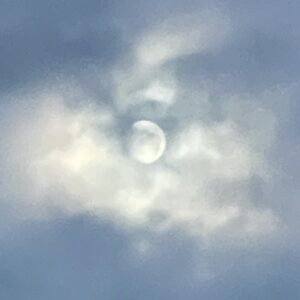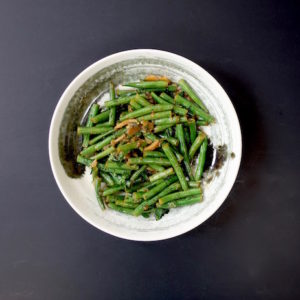Fresh Borlotti Beans
Excuse the quiet over here. Just before Prince stunned the world, John fell ill, necessitating some quality time at the hospital, where we impressed the nurses with our lifting technique. He is home now, rapidly recovering, almost his usual self.
As you might imagine, recent events left little time or energy for cooking.
—
Saturday, while dashing through the market, I spotted these borlotti beans.

According to Alice Waters, in The Art of Simple Food II, borlotti beans are “an unusual wax bush bean,” botanically related to the green bean. Waters prefers preparing them minimally. Given my digestion, I lean toward a Zuni Café Cookbook recipe for Long Cooked Romano Beans. Romano beans and borlotti are alike in size and shape, meaning either works well here.
As Laurie Colwin writes in Home Cooking, “I like vegetables to be very tender. I like a string bean that gives and does not fight back.” Colwin was writing in confessional mode. Long-Cooked Beans do fly in the face of most spring vegetable cookery, asking you to braise the beans far beyond sprightliness into limpid, beige submission. Stay the course and you’ll be amply rewarded: long cooking means deeply flavorful vegetables of immense character, with an almost meaty roundedness. Colwin would have adored this dish.
The chili flakes aren’t for kicks. Rather, they add gentle flavor. Use a light hand. Should you be seized by the desire to photograph that pretty red, do not inhale while leaning in to focus. The resulting sneezing fit frightened my cat.

Long cooked beans pair nicely with poultry, lamb, or beef; Rodgers suggests polenta as well.
If Borlotti Beans aren’t available, substitute Romano. If you want to use green or wax beans, mind your pot, as they’ll require perhaps half the cooking time to achieve the desired result: a completely collapsed, soft dish of beans whose dull appearance belies their big flavors.

Long-Cooked Borlotti Beans
Adapted from The Zuni Cafe Cookbook, by Judy Rodgers
Yield: two servings. Recipe easily scaled upward
Preparation time: 10 minutes prep, 2 hours cooking
3/4 pound Borlotti beans
2-4 garlic cloves, peeled and crushed
small pinch chili flakes (about 1/8th teaspoon)
salt to taste
3 tablespoons olive oil
Rinse beans if necessary. Trim the ends and cut as you wish. I like them in bite-sized pieces, but leave them larger if you prefer.
Place beans in a lidded 3-4 quart saucepan and mix olive oil in with your hands or a wooden spoon, ensuring olive oil is evenly distributed amongst the beans. Mix in chili flakes and salt. Place garlic on top. Cover.
Turn the heat to medium low. You may have to fuss with the heat a bit initially: Rodgers says you want to hear the beans sizzling gently. During the first 30 minutes of cooking, stir quickly a couple times. Don’t let the heat get so high the beans brown. Avoid temptation to add water or other liquid: the steaming in olive oil alone makes this dish.
After 30 minutes, taste for salt. Cover, turn the flame down to the lowest setting, and cook for 2 hours, stirring once or twice. The beans will turn beige and collapse, losing all their beautiful purple stripes but tasting wonderful nevertheless.
Notes: As there are so few ingredients, this is the time to use your best olive oil and sea salt.
Original recipe uses Romano beans: feel free to substitute these. If using green or wax beans, cut cooking time by at least half and watch closely, as they will cook faster.
Serve alongside poultry, pork, lamb, beef, or atop polenta.
Will keep in a covered container, refrigerated, up the three days. Do not freeze.

Photo Credit: Herb Ritts, from Prince: The Hits 2




